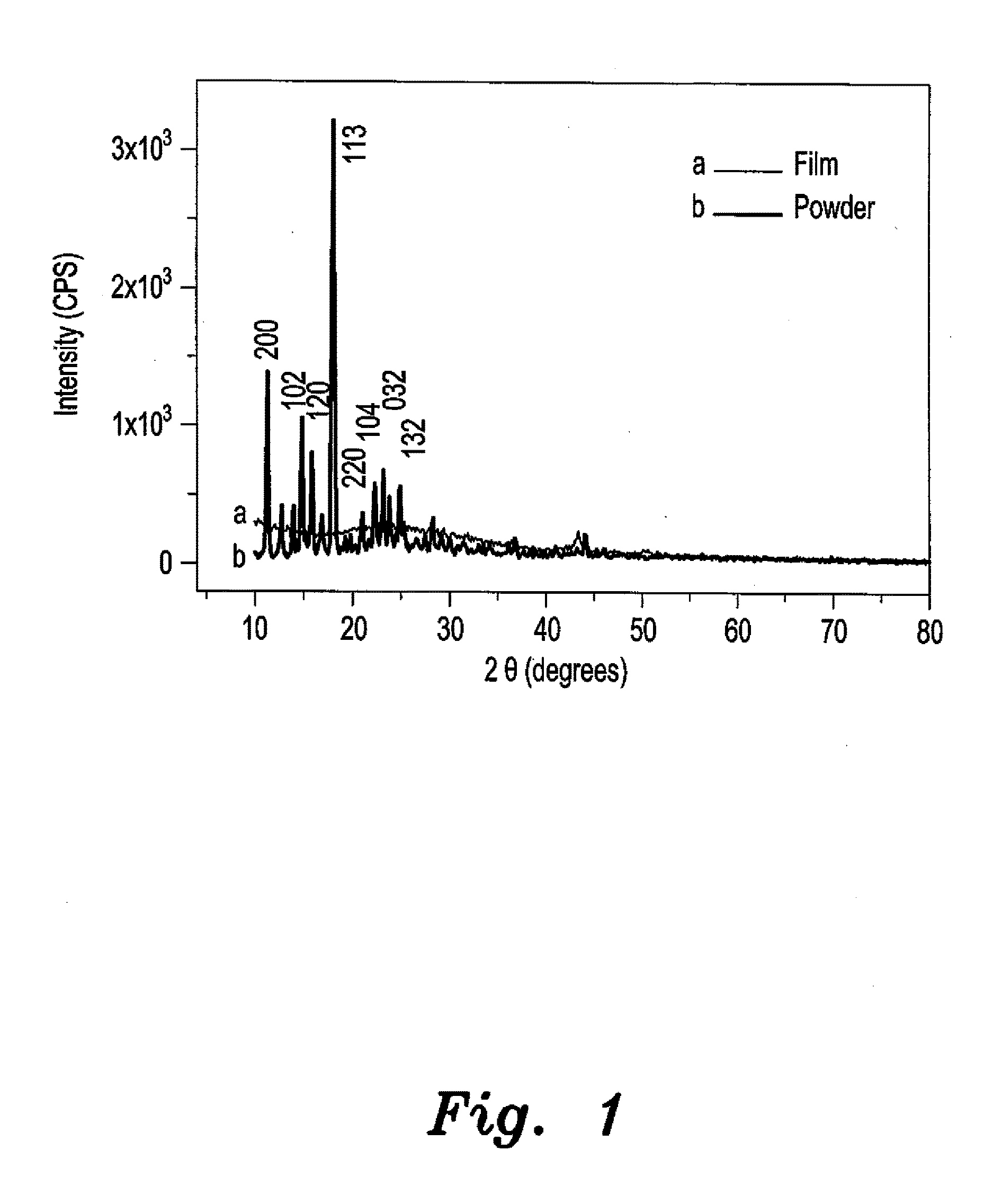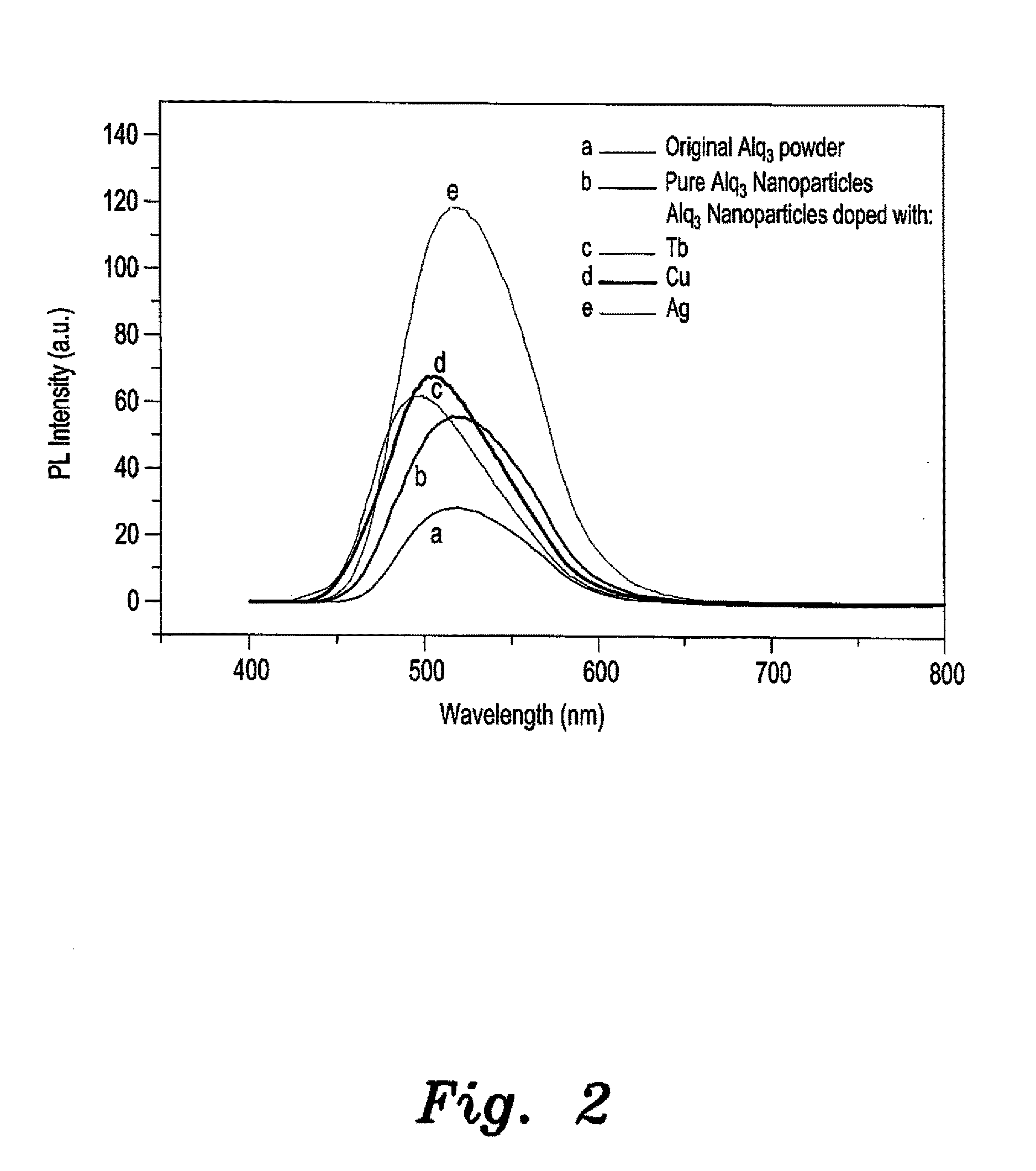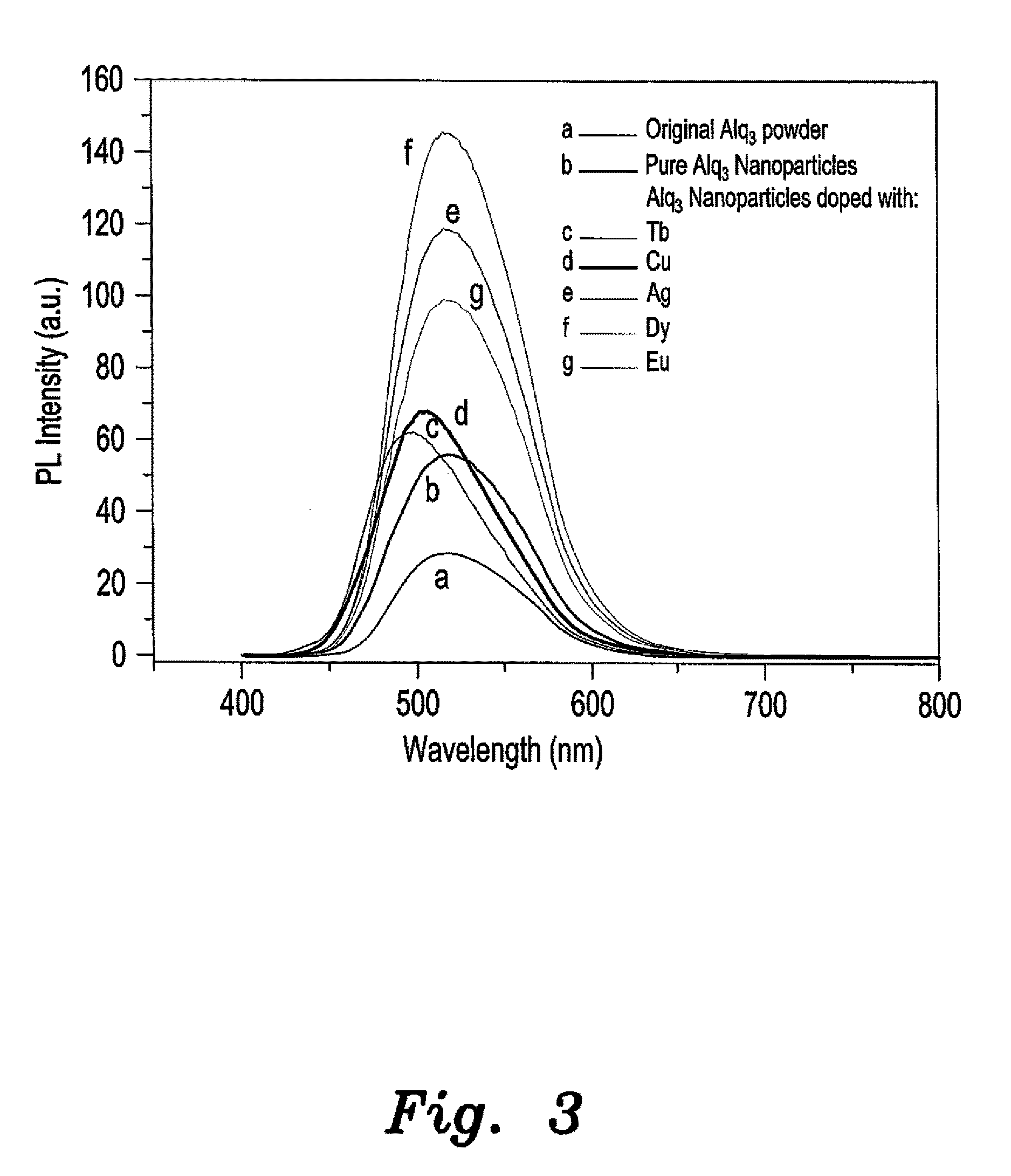Method of making doped alq3 nanostructures with enhanced photoluminescence
- Summary
- Abstract
- Description
- Claims
- Application Information
AI Technical Summary
Benefits of technology
Problems solved by technology
Method used
Image
Examples
Embodiment Construction
[0018]The method of making doped Alq3 nanostructures with enhanced photoluminescence includes the steps of dissolving tris(8-hydroxyquinolinato)aluminum (Alq3) and a metal in water to form a solution. The metal may be terbium (Tb), copper (Cu), silver (Ag), dysprosium (Dy) or europium (Eu), for example. The metal may be provided in a water soluble form, such as chlorides and nitrates thereof. The solution is then subjected to ultrasonic waves (i.e., a sonication bath) for a period of approximately 3 hours to approximately 4 hours. The solution, including the dissolved Alq3 powder preferably has an Alq3 to metal ratio of approximately 1 to 0.2 by weight or approximately 1 to 0.1 by weight. The solution is then dried at a temperature of approximately 50° C. for a period of approximately 8 hours to form a powder of Alq3 doped with the metal. The powder is then formed into nanostructures of the Alq3 doped with the metal. The doped Alq3 powder can be used to form nanoparticles, nanorods,...
PUM
| Property | Measurement | Unit |
|---|---|---|
| Temperature | aaaaa | aaaaa |
| Temperature | aaaaa | aaaaa |
| Time | aaaaa | aaaaa |
Abstract
Description
Claims
Application Information
 Login to View More
Login to View More - R&D
- Intellectual Property
- Life Sciences
- Materials
- Tech Scout
- Unparalleled Data Quality
- Higher Quality Content
- 60% Fewer Hallucinations
Browse by: Latest US Patents, China's latest patents, Technical Efficacy Thesaurus, Application Domain, Technology Topic, Popular Technical Reports.
© 2025 PatSnap. All rights reserved.Legal|Privacy policy|Modern Slavery Act Transparency Statement|Sitemap|About US| Contact US: help@patsnap.com



